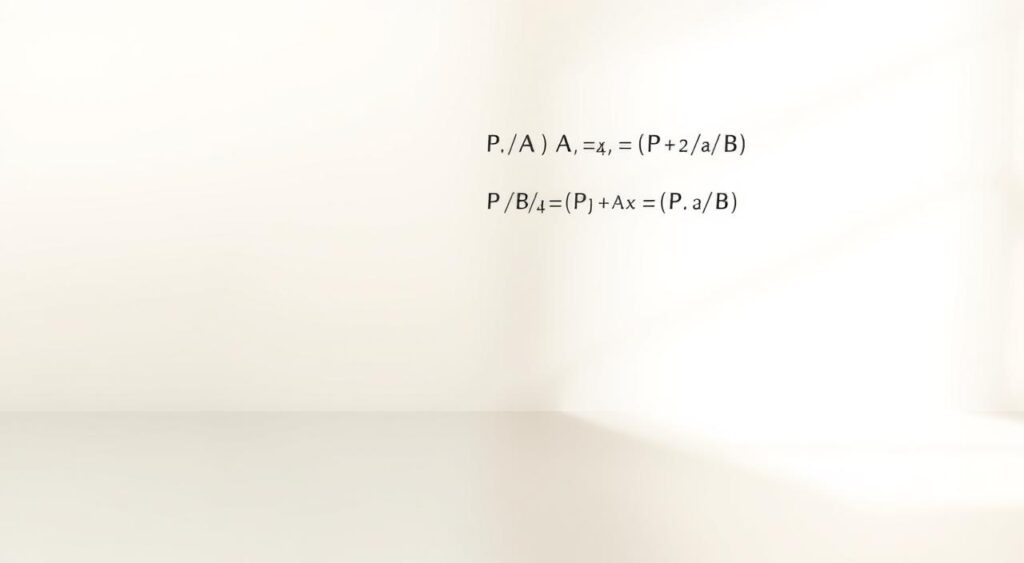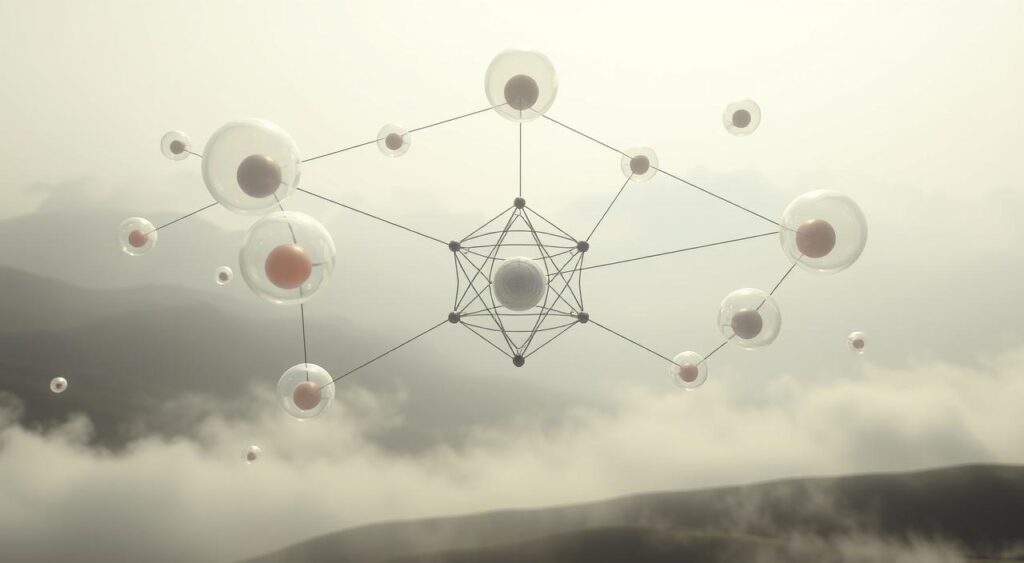Ever wonder how to make smart choices when things are uncertain? This mental model, also known as probabilistic reasoning, helps you navigate life’s unpredictability.
Instead of guessing or hoping for the best, it uses logic and data to estimate what might happen next, applying probability theory to assess possible outcomes.
Think of it like a weather forecast. If there’s an 80% chance of rain, you’ll probably grab an umbrella. That’s probabilistic thinking in action—weighing odds and understanding risk to make decisions wisely. I
n business or personal life, this approach turns vague worries into clear plans, helping you make better choices..
Why does this matter now? From career moves to financial choices, uncertainty is everywhere. Tools like scenario analysis help break down complex decisions.
For example, sports teams use similar models to draft players, while investors rely on them to manage risks. Learn more about mental models here.
In this article, we’ll explore how to apply these ideas daily. You’ll discover concepts like Bayesian thinking (updating predictions with new info) and see real-world examples. Ready to feel more confident when life throws curveballs?
Key Takeaways
- Embrace uncertainty by estimating the likelihood of outcomes, acknowledging biases that may cloud your judgment
- Combine logic, data, and experience to make informed choices, utilizing Bayes theorem for better predictions
- Update predictions as new information becomes available to improve your chances of a specific outcome
- Apply these ideas to relationships, finances, and career decisions, enhancing your overall decision-making process
- Tools like decision trees simplify complex scenarios, offering clear ways to navigate uncertainty
- Practical for everyday life—from sports to stock markets
Introduction to Uncertainty and Probabilistic Thinking
Life rarely follows a script—so why do we pretend it does? Uncertainty shapes every choice, from career moves to weekend plans. It’s the gap between what we know and what we could know. Managing this gap requires tools that turn unknowns into actionable insights.
Understanding the Concept
Uncertainty means dealing with incomplete information. Imagine a doctor diagnosing a patient: symptoms hint at possibilities, not certainties.
This is where estimating probabilities becomes vital. Simple math—like calculating a 30% chance of rain—helps us prepare without demanding perfect answers.
Ever postponed a decision because you wanted “more data”? That’s uncertainty at work. The key isn’t eliminating unknowns but learning to navigate them.
For example, businesses often face “Knightian uncertainty”—outcomes that are unknowable, like predicting market trends. Here, heuristic models act as life rafts in foggy waters.
Importance in Modern Decision-Making
Why does this matter today? Decisions now carry higher stakes. A wrong career move or investment can ripple for years. Tools like scenario analysis let us weigh options rationally.
Take emergency rooms: doctors use quick probability assessments to prioritize patients—a skill we all need in chaotic moments.
Consider how often you’ve misjudged a situation. Was it due to overconfidence or ignoring odds? Modern problems—like climate change or tech disruptions—demand comfort with randomness in systems.
By framing choices as bets (with estimated payoffs), we reduce emotional reactions and focus on process.
This approach isn’t about predicting the future. It’s about building resilience when plans collide with reality. Ready to explore how probability reshapes everyday logic?
Core Principles Behind the Mental Model

How do we adjust our views when new facts emerge? The answer lies in a powerful method called Bayesian thinking. This approach helps us revise beliefs logically—like editing a rough draft as fresh clues appear.
Bayesian thinking encourages us to update our initial assumptions in light of new evidence, allowing for a more nuanced understanding of situations. For instance, in everyday life, we often face uncertainties that require us to reassess our beliefs based on new information.
By applying this method, we can make more informed decisions in various situations, whether we are evaluating health risks, investment opportunities, or personal relationships.
This iterative process of updating our beliefs not only enhances our critical thinking skills but also fosters a mindset that embraces change and uncertainty.
Bayesian Thinking and Its Process

Let’s break down Bayes’ Theorem with a real-life scenario. Imagine Alice takes a pregnancy test that’s 99% accurate. Her initial assumption (prior probability) might be low—say 1% chance.
But if the test shows positive, she recalculates using three factors, enhancing her certainty in making decisions:
- Prior belief: 1% base rate before the test
- New data: 99% accurate result
- Updated probability: Roughly 50% chance of pregnancy
Wait—why not 99%? Because rare events (like 1% base rates) still need overwhelming evidence.
This math mirrors how doctors interpret lab results or investors assess stock tips, highlighting the importance of probabilistic thinking in making decisions.
Interpreting New Evidence and Prior Knowledge
Ever changed your mind after learning one new fact? That’s Bayesian logic in action, a crucial aspect of making decisions in uncertain situations. Consider these steps:
- Start with what you already know (35% chance of project success)
- Add fresh information (client feedback suggests 70% viability)
- Adjust your outlook (revised to 55% success probability)
This isn’t about being right every time. It’s about making better guesses by blending experience with evidence and understanding biases. Even small updates—like a friend’s restaurant review—can shift your dinner plans from “maybe” to “let’s go!”
Next time you face uncertainty, ask: “What would Bayes do?” You’ll likely find clearer answers by mixing old wisdom with new clues, enhancing your probabilistic thinking in various business scenarios.
Exploring Fat-Tailed Curves and Normal Distributions

Why do some surprises feel completely unexpected? Picture school grades versus stock market crashes. One follows predictable patterns—the other shocks everyone. This difference lies in how data spreads out, called distributions.
Differences Between Bell Curves and Fat Tails
Normal distributions (bell curves) keep most results near average. Think human heights—68% of people stand within 3 inches of the median. Extreme values fade quickly, like finding someone 7 feet tall (rare but possible).
| Normal Distribution | Fat-Tailed Curve | |
|---|---|---|
| Examples | Heights, test scores | Stock markets, pandemics |
| Extreme Events | Predictable (1 in 1000) | More frequent (1 in 50) |
| Risk Planning | Use averages | Prepare for “Black Swans” |
Fat-tailed curves break these rules. The 2008 market crash defied normal models—a 20% drop shouldn’t happen yearly.
Yet in finance, such events occur every decade. This changes how we plan for risks.
Real-World Examples of Data Distributions
Rolling two dice? You’ll mostly get 7s (normal curve). Now imagine a game where rolls can suddenly hit 100. That’s fat-tailed thinking—like rare tech innovations reshaping whole industries.
Here’s why it matters:
- Weather forecasts use normal models (safe for picnics)
- Earthquake zones need fat-tailed plans (big quakes possible)
Next time you hear “average,” ask: Could outliers change everything? Markets and meteors remind us—not all curves play nice.
Navigating Uncertainty: Asymmetries and Estimation Errors

Why do smart people make avoidable mistakes? Often, it’s because we misjudge odds—like assuming a 30-minute task takes 10. Harvard research shows these estimation errors aren’t random. They swing between wild optimism (“This diet will work in a week!”) and excessive caution (“I’ll never get promoted”).
The Impact of Over-Optimism versus Under-Optimism
Ever planned a “quick home renovation” that took months? That’s asymmetric thinking. Studies reveal we’re 70% more likely to underestimate project timelines than overestimate them. Yet with health risks, we often over-prepare—like buying insurance for rare events. This highlights the importance of probabilistic thinking in making decisions about potential outcomes.
Common asymmetries include:
- Assuming best-case scenarios for personal goals
- Preparing for worst-case outcomes in financial planning
- Ignoring mid-range possibilities in relationships
Identifying and Mitigating Estimation Errors
Try this simple fix: Add 20% to time estimates, subtract 20% from expected gains.
For complex situations, use the “Three Scenarios Method”:
- Write your initial guess
- Create a 50% worse version
- Imagine a 50% better outcome
Research shows people who practice this make 40% fewer errors in work estimates. Next time you face uncertainty, ask: “Am I wearing rose-colored glasses or doom goggles?”
Adjusting these mental lenses helps navigate life’s uneven playing field.
Real-World Applications in Business Decision-Making

What separates top performers from the rest? Smart companies treat uncertainty like weather patterns—tracking data to navigate storms and sunshine. This approach transforms gut feelings into actionable strategies.
Using Probabilities in Product Roadmap Planning
Imagine planning a new app feature. Will users pay $5/month? Teams using probability models might:
- Analyze past conversion rates (40% base)
- Factor in competitor moves (20% adoption risk)
- Update weekly with beta-test feedback
Amazon uses similar methods for pricing experiments. They test small markets first, then scale based on success odds. This cuts wasted resources by 35% compared to traditional launches.
| Traditional Planning | Probability-Based Approach |
|---|---|
| Fixed 12-month roadmap | Quarterly reviews with adjustment triggers |
| “Best guess” prioritization | Features ranked by impact/risk scores |
| All-or-nothing launches | Phased rollouts with exit criteria |
Risk Management and Assessing Market Trends

When COVID disrupted supply chains, companies using probability frameworks recovered 3x faster.
How? They’d already mapped scenarios like:
- 30% chance of port delays
- 15% probability of material shortages
- 5% risk of total supplier collapse
Retailers like Target now use real-time sales data to adjust inventory weekly. This dynamic model helped them avoid $300M in excess stock during 2022’s demand shifts.
Ready to upgrade your strategy? Explore our guide on building a data-driven framework for workplace decisions. Remember—great plans aren’t set in stone.
They’re living systems that grow smarter with every new data point.
Embracing “probabilistic thinking” in Day-to-Day Decisions

How often do you pause to consider multiple possibilities before choosing? Daily choices—like picking a dinner recipe or scheduling meetings—hold hidden layers of potential results.
By mapping out possible outcomes, you transform guesswork into strategic navigation.
Let’s say you’re planning an outdoor team lunch. Instead of hoping for sun, check the weather app: 60% chance of rain, 25% clear skies. You might book a patio with a covered area—a simple way to balance enjoyment and practicality.
From Groceries to Career Moves
This approach works for bigger decisions too. Facing a job offer? List criteria like commute time, salary, and growth potential. Assign weights to each factor, then score both options.
Studies show people who use this structured framework report 30% higher satisfaction in their choices.
Try these steps tonight:
- Write down three possible results for your next decision
- Rate their likelihood (e.g., 40% chance friends prefer Italian)
- Choose the option with the best balance of odds and benefits
Remember: The goal isn’t perfection. It’s making thoughtful moves instead of reactive guesses.
What small choice could you approach differently tomorrow?
Conclusion
Every choice we make shapes our future—but how we approach uncertainty determines our success. This mindset helps us navigate life’s twists with clearer eyes and steadier hands, especially when making decisions in uncertain situations.
From career leaps to family plans, understanding probabilities and outcomes turns guesswork into strategy. Businesses use it to dodge market storms, applying probabilistic thinking to estimate risks.
Parents apply it when choosing schools, leveraging knowledge of distributions of outcomes. Over time, this flexible approach builds confidence in chaotic moments.
Three truths stand out:
- Life rarely follows straight paths—prepare for detours
- New information reshapes old assumptions
- Small daily choices create big long-term results
The real power lies in continuous adaptation. Like updating a weather app before a picnic, we adjust plans as clouds form.
This isn’t about perfection—it’s about making better bets with the cards we’re dealt based on estimates of probability.
Ready to feel calmer in stormy seas? Start tomorrow by asking: “What’s the smartest move I can make right now?” Then watch how small shifts in thinking lead to clearer horizons.


